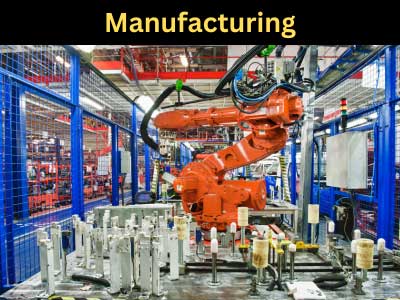Key Takeaway
Automation in manufacturing significantly reduces costs by minimizing manual, repetitive tasks and increasing efficiency. By automating routine operations, businesses can lower labor costs, reduce errors, and speed up production. This leads to higher productivity and better utilization of resources.
Moreover, automation allows for more consistent quality, reducing waste and the need for rework. It also helps in optimizing energy usage, further cutting operational costs. Implementing automation not only saves money but also enhances overall efficiency, allowing businesses to reinvest savings into growth and innovation.
Reducing Labor Costs with Automation
Automation plays a pivotal role in lowering labor costs within the manufacturing industry. By integrating automated machines and robots into production lines, companies can significantly decrease their reliance on manual labor. This doesn’t necessarily mean eliminating the workforce entirely; instead, it involves reallocating human resources to more strategic roles that demand critical thinking and creativity. Automated systems efficiently handle repetitive and mundane tasks with high precision and consistency, which minimizes errors and boosts overall efficiency. This transition not only reduces labor expenses but also enhances productivity. Additionally, automation can operate continuously without fatigue, resulting in increased output levels without the added costs associated with overtime pay or shift differentials. By leveraging automation, manufacturers can achieve a more cost-effective and productive operation.

Improving Efficiency and Reducing Waste
One of the standout benefits of automation is its ability to improve operational efficiency and reduce waste. Automated systems are designed to perform tasks with high accuracy and consistency, which significantly minimizes the chances of errors that often lead to wasted materials. In traditional manufacturing processes, human error can result in defective products that must be discarded or reworked, incurring additional costs. Automation ensures that each product meets quality standards, reducing the rate of defects.
Furthermore, automation facilitates better resource management. Machines can be programmed to use materials optimally, cutting down on excess use and saving costs on raw materials. Real-time monitoring systems can track production processes, identify bottlenecks, and adjust operations to maintain optimal efficiency. This level of control leads to streamlined processes where resources are utilized effectively, and waste is kept to a minimum. By reducing waste and enhancing efficiency, manufacturers can lower operational costs and increase profitability.
Enhanced Productivity with Automated Processes
Automated processes significantly boost productivity by enabling faster production rates and higher throughput. Machines and robots can operate at speeds unattainable by human workers, all while maintaining consistent quality. This means more products can be manufactured in less time, meeting higher demand without compromising standards. Automation also reduces downtime associated with manual labor, such as breaks or shift changes, ensuring that production can continue uninterrupted.
In addition to speed, automation enhances productivity through precision. Automated systems follow exact specifications, reducing variability in the production process. This leads to uniform products and decreases the need for quality inspections and adjustments. Moreover, automation allows for the integration of advanced technologies like Artificial Intelligence and Machine Learning, which can further optimize production by predicting maintenance needs and adjusting operations in real-time. The cumulative effect is a more efficient production line that maximizes output while minimizing costs.
Long-Term ROI of Automation Investments
Investing in automation may require significant upfront capital, but the long-term return on investment (ROI) is substantial. The initial costs are offset over time through savings in labor, increased efficiency, and higher productivity. Automation reduces the reliance on manual labor, leading to ongoing savings in wages, benefits, and training expenses. Additionally, the enhanced efficiency and productivity contribute to higher revenues due to increased production capacity and faster time-to-market.
Automation also extends the lifespan of equipment through predictive maintenance. Automated systems can monitor their own performance and alert operators to potential issues before they lead to breakdowns. This proactive approach reduces repair costs and prevents costly downtime. Furthermore, the consistency and quality provided by automation can lead to better customer satisfaction and repeat business, positively impacting the bottom line. Over time, these factors contribute to a significant ROI, making automation a wise long-term investment for manufacturers.
Key Areas Where Automation Saves Costs
Automation saves costs in several key areas within the manufacturing process. First, in assembly lines, robots can perform repetitive tasks more efficiently than humans, reducing labor costs and increasing output. Second, in quality control, automated inspection systems can detect defects at a microscopic level, minimizing the cost associated with product recalls and returns. Third, in inventory management, automation can optimize stock levels, reducing storage costs and preventing overproduction.
Additionally, automation in supply chain management improves coordination with suppliers and distributors, reducing delays and associated costs. Energy consumption is another area where automation leads to savings. Automated systems can optimize energy use by operating equipment only when needed and at optimal settings, lowering utility expenses. By addressing these key areas, automation creates a more cost-effective and efficient manufacturing operation.
Conclusion
Automation in manufacturing is more than just a technological advancement; it is a strategic initiative that unlocks substantial cost savings and drives long-term success. By reducing labor expenses, enhancing efficiency, and boosting productivity, automation enables manufacturers to operate more effectively and competitively. Additionally, the strong long-term return on investment (ROI) that automation provides ensures sustained financial benefits. The key to maximizing these advantages lies in identifying the areas where automation can make the most significant impact and implementing solutions that align seamlessly with your operational goals. As the manufacturing landscape continues to evolve and become increasingly competitive, embracing automation is essential not only for reducing costs but also for maintaining a leading edge. Investing in automation streamlines operations, minimizes errors, and fosters innovation, paving the way for continuous growth and development in the industry. Ultimately, automation empowers manufacturers to achieve higher levels of efficiency, adaptability, and profitability, ensuring their place at the forefront of the modern manufacturing world.
